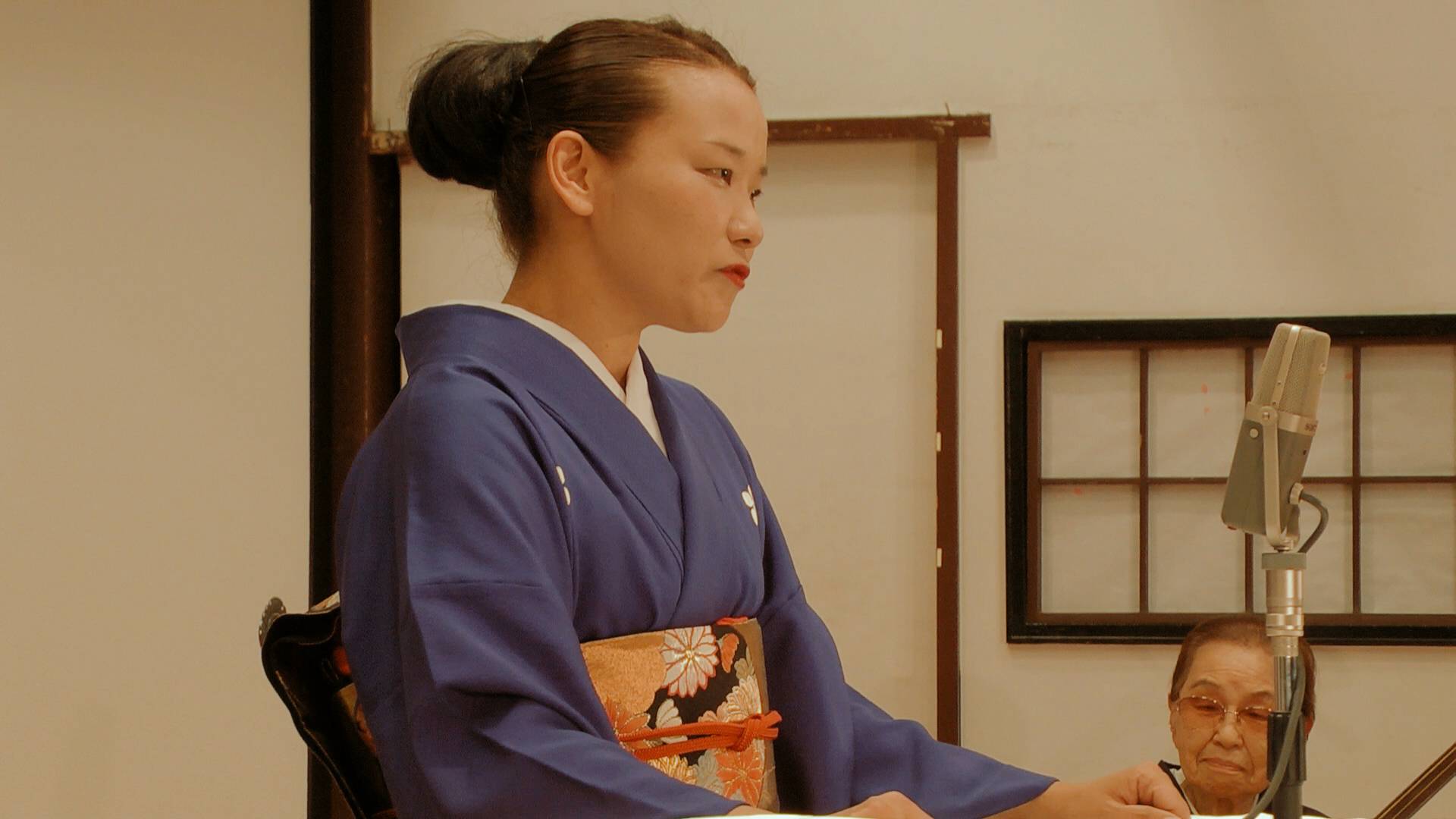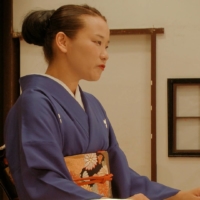This summer is seeing the return of some of Japan’s greatest matsuri (traditional festivals) after an extended pandemic hiatus, so it’s only fitting that one of the most vibrant films playing in theaters right now is an exploration of how cultural traditions survive.
In Atiqa Kawakami’s compassionate and richly textured documentary, “With Each Passing Breath,” the tradition in question is rōkyoku, a form of narrative singing that enjoyed its greatest popularity during the first half of the 20th century. The number of active performers has dropped from a peak of 3,000 to less than 100, but the art form is still stubbornly clinging to life.
During the first week of every month, rōkyoku artists can be found spinning yarns to shamisen accompaniment at the Mokubatei theater in Tokyo’s Asakusa district. That’s where Kawakami’s film spends much of its time, hanging out in the cramped backstage or watching performances from the wings.
The other main setting is the apartment of shamisen player Yuko Tamagawa, who is already in her 90s at the start of the film but doesn’t seem intent on stopping anytime soon. (Spoiler: She celebrated her centennial last year.)
Veteran rōkyoku performer Koryu Minatoya has been staying at Tamagawa’s whenever she visits Tokyo from her home in Aichi Prefecture. In recent years, Yuko has also had another regular guest: Koryu’s apprentice, Kosome, a youngish woman with an old soul. Delightfully, the two elders refer to her as musume (“our girl”).
The film begins in the mid-2010s, by which point Koryu is already in the twilight of her career: Her health is failing, and the explosive power of her voice has dimmed. All the same, she’s a commanding presence on stage, her eyes welling with tears as she recounts lurid tales of adulterous lovers and severed heads.
When Koryu is finally forced to retire, it’s painful to watch but also delivers the film’s most moving scene. During a visit to her mentor’s sickbed, Kosome plays a cassette recording of one of Koryu’s old performances, captured while she was in her prime. The vocals are extraordinary, but so is the effect they have on the convalescent, whose arms start dancing under her bedsheets in response to the music.

In a narrative development worthy of a Hollywood flick, Yuko then agrees to take on her friend’s apprentice. She may have reached an age at which she can discuss her own death as blithely as she’d talk about the weather, but she’s determined to honor the promise she made to play accompaniment at Kosome’s debut performance.
Kawakami — who also shot the film — doesn’t believe in keeping a discreet distance. Her camera is constantly pressing up close to her subjects or poring over interiors crammed with decades’ worth of ephemera. It’s like she is undergoing an apprenticeship of her own. During practice sessions, she hovers just over people’s shoulders, eager to soak up every detail.
While it features some crackling musical scenes, “With Each Passing Breath” is ultimately more about the bonds that exist between generations. The final sequence shows Kosome accompanying Yuko as the older woman feeds the stray cats in her neighborhood — a routine she has kept up for the past 30 years. It’s a seemingly throwaway scene, but it lingers. There’s something more than artistic tradition that’s being passed down here.
| Rating | |
|---|---|
| Director | Atiqa Kawakami |
| Run Time | 111 mins. |
| Language | Japanese |
| Opens | Now playing |

















With your current subscription plan you can comment on stories. However, before writing your first comment, please create a display name in the Profile section of your subscriber account page.